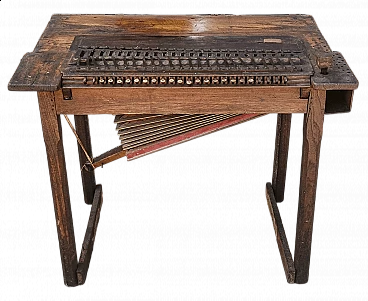Dingo40
Been here for ages!
Here's how!
Very true. It's only worth it when you want to join an accordion group where everyone has their accordions tuned to 440 and playing together would make you stand out like a sore thumb...And this is why I'll just keep mine the way it came to me at 442
Not worth the cost when I don't need to be tuned to 440

Good one, Dingo - I'm in the process of making something similar myself where I can test reeds plates individually, on their mounting blocks, or fully mounted in the accordion 'halves'.More on the provino:

Tuning table for accordions
Tuning table for musical instrument from the turn of the century, used for tuning accordions, a fascinating object due to its rarity and particularity it is called in slang "provino" and was used for the first tuning of accordion voices. For collectors and connoisseurs. Measurements 99 x 61.5 x...www.intondo.com
I find a dose of 600 mg of plain old aspirinwaiting for the arthritic joint pains to subside a
Dingo40, you certainly surprised me with your above post by using something I presented to the RMMS 17 years ago....describing the Provino. I read that intently like I never saw it before and then realized it was me doing the description...17 years ago. If only I was that articulate nowadays.
I, regrettably, do not believe that musical instrument repair and construction are "flies preserved in amber", forever frozen into one proper way of doing things. Your methods as described will surely result in excellence- but tha passage of time and new technology (the "T" word; shame on me) mean that there are other mehods which are equally or better suited....So I have much to say what went on back then and forward. I'm a believer that going back in time will place one closer to the truth...so I search for old books etc. to enlighten me.
I have about 6 provinos and they came from factories were I was associated with...
